Kurt Shuster
Improving Open Language Models by Learning from Organic Interactions
Jun 07, 2023



Abstract:We present BlenderBot 3x, an update on the conversational model BlenderBot 3, which is now trained using organic conversation and feedback data from participating users of the system in order to improve both its skills and safety. We are publicly releasing the participating de-identified interaction data for use by the research community, in order to spur further progress. Training models with organic data is challenging because interactions with people "in the wild" include both high quality conversations and feedback, as well as adversarial and toxic behavior. We study techniques that enable learning from helpful teachers while avoiding learning from people who are trying to trick the model into unhelpful or toxic responses. BlenderBot 3x is both preferred in conversation to BlenderBot 3, and is shown to produce safer responses in challenging situations. While our current models are still far from perfect, we believe further improvement can be achieved by continued use of the techniques explored in this work.
The HCI Aspects of Public Deployment of Research Chatbots: A User Study, Design Recommendations, and Open Challenges
Jun 07, 2023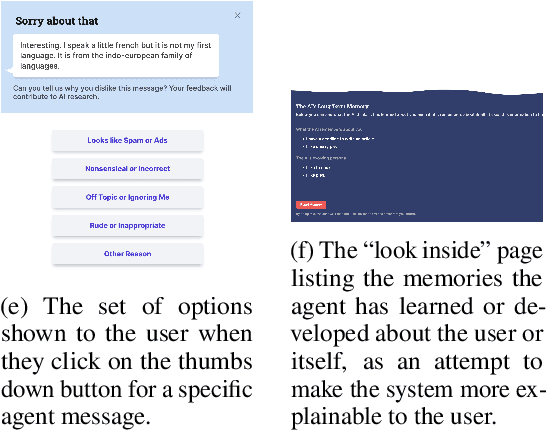
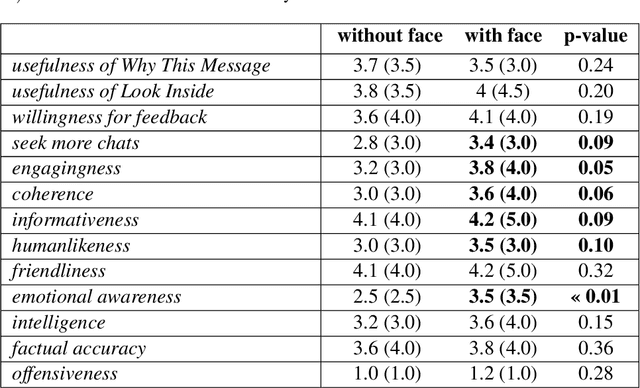
Abstract:Publicly deploying research chatbots is a nuanced topic involving necessary risk-benefit analyses. While there have recently been frequent discussions on whether it is responsible to deploy such models, there has been far less focus on the interaction paradigms and design approaches that the resulting interfaces should adopt, in order to achieve their goals more effectively. We aim to pose, ground, and attempt to answer HCI questions involved in this scope, by reporting on a mixed-methods user study conducted on a recent research chatbot. We find that abstract anthropomorphic representation for the agent has a significant effect on user's perception, that offering AI explainability may have an impact on feedback rates, and that two (diegetic and extradiegetic) levels of the chat experience should be intentionally designed. We offer design recommendations and areas of further focus for the research community.
Multi-Party Chat: Conversational Agents in Group Settings with Humans and Models
Apr 26, 2023



Abstract:Current dialogue research primarily studies pairwise (two-party) conversations, and does not address the everyday setting where more than two speakers converse together. In this work, we both collect and evaluate multi-party conversations to study this more general case. We use the LIGHT environment to construct grounded conversations, where each participant has an assigned character to role-play. We thus evaluate the ability of language models to act as one or more characters in such conversations. Models require two skills that pairwise-trained models appear to lack: (1) being able to decide when to talk; (2) producing coherent utterances grounded on multiple characters. We compare models trained on our new dataset to existing pairwise-trained dialogue models, as well as large language models with few-shot prompting. We find that our new dataset, MultiLIGHT, which we will publicly release, can help bring significant improvements in the group setting.
OPT-IML: Scaling Language Model Instruction Meta Learning through the Lens of Generalization
Dec 28, 2022



Abstract:Recent work has shown that fine-tuning large pre-trained language models on a collection of tasks described via instructions, a.k.a. instruction-tuning, improves their zero and few-shot generalization to unseen tasks. However, there is a limited understanding of the performance trade-offs of different decisions made during the instruction-tuning process. These decisions include the scale and diversity of the instruction-tuning benchmark, different task sampling strategies, fine-tuning with and without demonstrations, training using specialized datasets for reasoning and dialogue, and finally, the fine-tuning objectives themselves. In this paper, we characterize the effect of instruction-tuning decisions on downstream task performance when scaling both model and benchmark sizes. To this end, we create OPT-IML Bench: a large benchmark for Instruction Meta-Learning (IML) of 2000 NLP tasks consolidated into task categories from 8 existing benchmarks, and prepare an evaluation framework to measure three types of model generalizations: to tasks from fully held-out categories, to held-out tasks from seen categories, and to held-out instances from seen tasks. Through the lens of this framework, we first present insights about instruction-tuning decisions as applied to OPT-30B and further exploit these insights to train OPT-IML 30B and 175B, which are instruction-tuned versions of OPT. OPT-IML demonstrates all three generalization abilities at both scales on four different evaluation benchmarks with diverse tasks and input formats -- PromptSource, FLAN, Super-NaturalInstructions, and UnifiedSKG. Not only does it significantly outperform OPT on all benchmarks but is also highly competitive with existing models fine-tuned on each specific benchmark. We release OPT-IML at both scales, together with the OPT-IML Bench evaluation framework.
Contrastive Distillation Is a Sample-Efficient Self-Supervised Loss Policy for Transfer Learning
Dec 21, 2022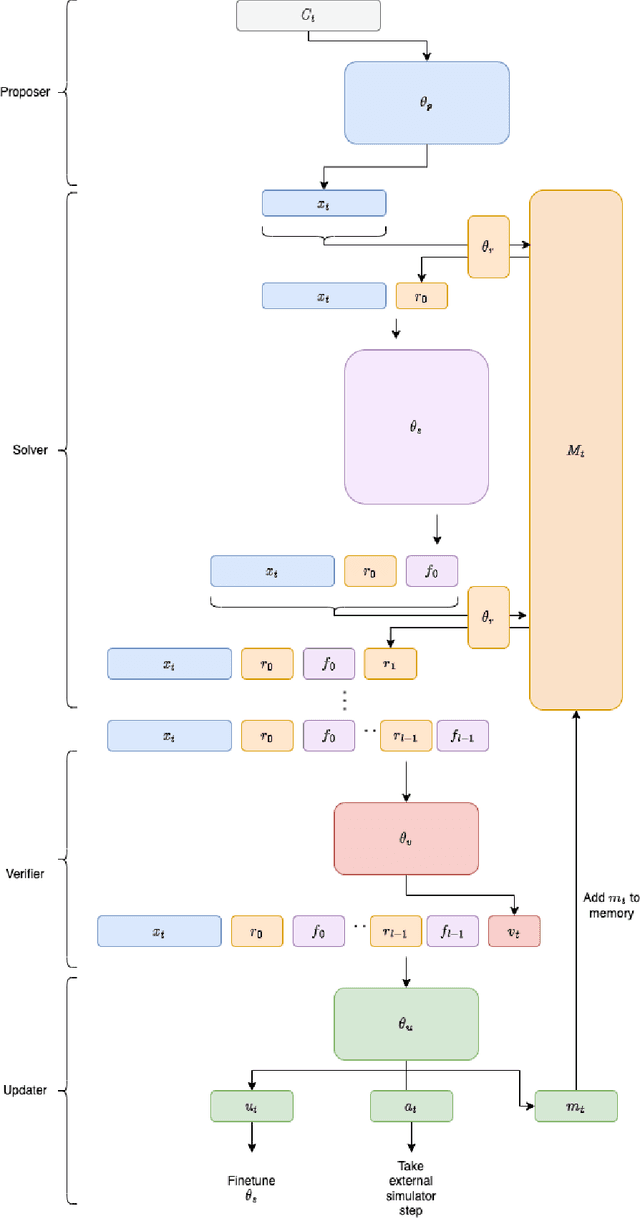

Abstract:Traditional approaches to RL have focused on learning decision policies directly from episodic decisions, while slowly and implicitly learning the semantics of compositional representations needed for generalization. While some approaches have been adopted to refine representations via auxiliary self-supervised losses while simultaneously learning decision policies, learning compositional representations from hand-designed and context-independent self-supervised losses (multi-view) still adapts relatively slowly to the real world, which contains many non-IID subspaces requiring rapid distribution shift in both time and spatial attention patterns at varying levels of abstraction. In contrast, supervised language model cascades have shown the flexibility to adapt to many diverse manifolds, and hints of self-learning needed for autonomous task transfer. However, to date, transfer methods for language models like few-shot learning and fine-tuning still require human supervision and transfer learning using self-learning methods has been underexplored. We propose a self-supervised loss policy called contrastive distillation which manifests latent variables with high mutual information with both source and target tasks from weights to tokens. We show how this outperforms common methods of transfer learning and suggests a useful design axis of trading off compute for generalizability for online transfer. Contrastive distillation is improved through sampling from memory and suggests a simple algorithm for more efficiently sampling negative examples for contrastive losses than random sampling.
The CRINGE Loss: Learning what language not to model
Nov 10, 2022Abstract:Standard language model training employs gold human documents or human-human interaction data, and treats all training data as positive examples. Growing evidence shows that even with very large amounts of positive training data, issues remain that can be alleviated with relatively small amounts of negative data -- examples of what the model should not do. In this work, we propose a novel procedure to train with such data called the CRINGE loss (ContRastive Iterative Negative GEneration). We show the effectiveness of this approach across three different experiments on the tasks of safe generation, contradiction avoidance, and open-domain dialogue. Our models outperform multiple strong baselines and are conceptually simple, easy to train and implement.
When Life Gives You Lemons, Make Cherryade: Converting Feedback from Bad Responses into Good Labels
Oct 28, 2022Abstract:Deployed dialogue agents have the potential to integrate human feedback to continuously improve themselves. However, humans may not always provide explicit signals when the chatbot makes mistakes during interactions. In this work, we propose Juicer, a framework to make use of both binary and free-form textual human feedback. It works by: (i) extending sparse binary feedback by training a satisfaction classifier to label the unlabeled data; and (ii) training a reply corrector to map the bad replies to good ones. We find that augmenting training with model-corrected replies improves the final dialogue model, and we can further improve performance by using both positive and negative replies through the recently proposed Director model.
BlenderBot 3: a deployed conversational agent that continually learns to responsibly engage
Aug 10, 2022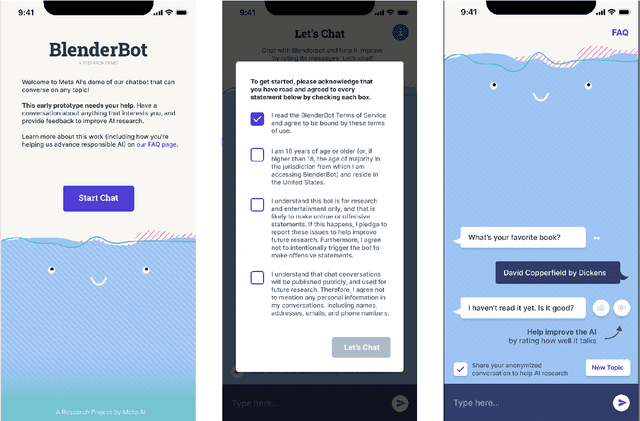
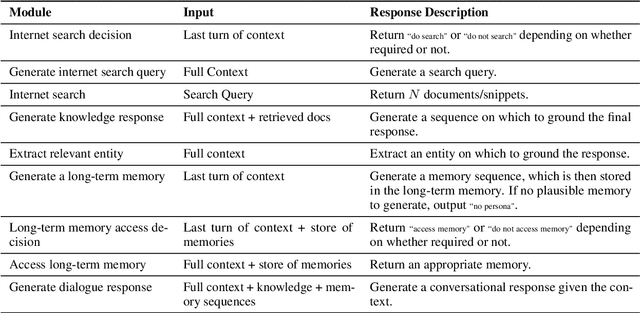
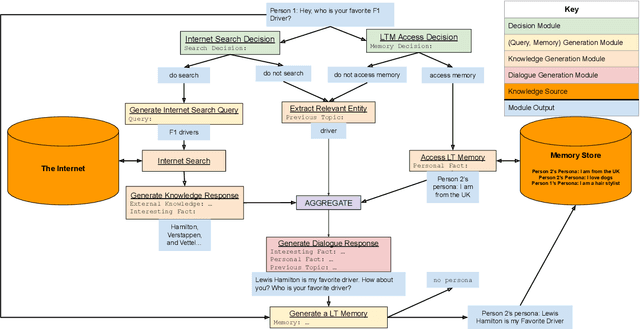
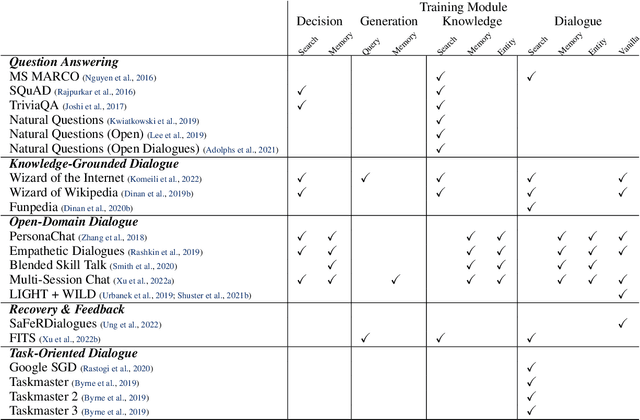
Abstract:We present BlenderBot 3, a 175B parameter dialogue model capable of open-domain conversation with access to the internet and a long-term memory, and having been trained on a large number of user defined tasks. We release both the model weights and code, and have also deployed the model on a public web page to interact with organic users. This technical report describes how the model was built (architecture, model and training scheme), and details of its deployment, including safety mechanisms. Human evaluations show its superiority to existing open-domain dialogue agents, including its predecessors (Roller et al., 2021; Komeili et al., 2022). Finally, we detail our plan for continual learning using the data collected from deployment, which will also be publicly released. The goal of this research program is thus to enable the community to study ever-improving responsible agents that learn through interaction.
DIRECTOR: Generator-Classifiers For Supervised Language Modeling
Jun 15, 2022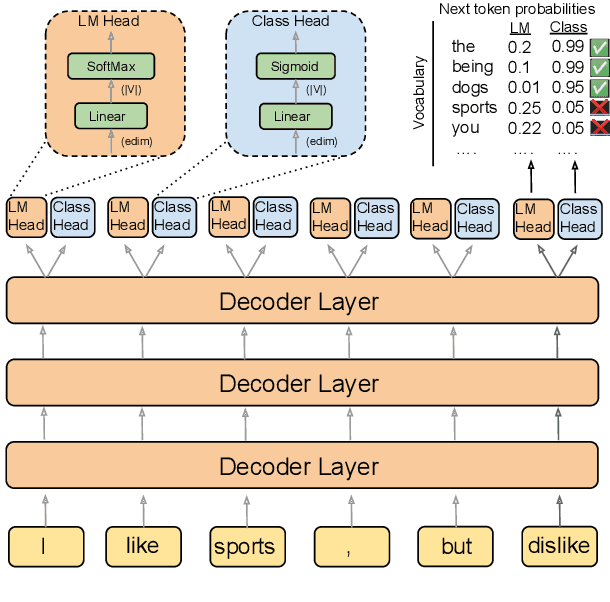
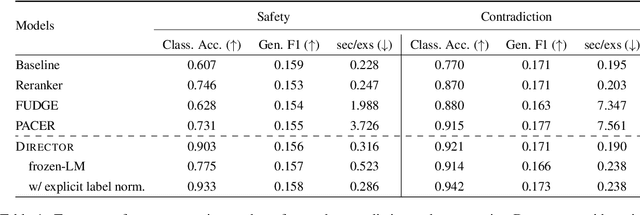
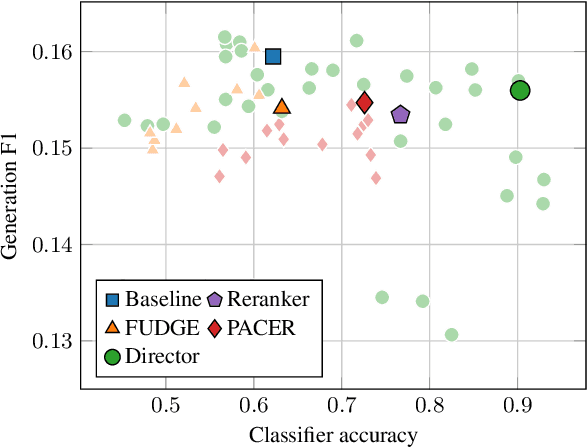
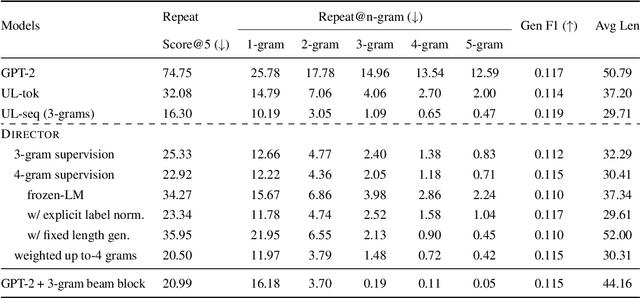
Abstract:Current language models achieve low perplexity but their resulting generations still suffer from toxic responses, repetitiveness and contradictions. The standard language modeling setup fails to address these issues. In this paper, we introduce a new architecture, {\sc Director}, that consists of a unified generator-classifier with both a language modeling and a classification head for each output token. Training is conducted jointly using both standard language modeling data, and data labeled with desirable and undesirable sequences. Experiments in several settings show that the model has competitive training and decoding speed compared to standard language models while yielding superior results, alleviating known issues while maintaining generation quality. It also outperforms existing model guiding approaches in terms of both accuracy and efficiency.
OPT: Open Pre-trained Transformer Language Models
May 05, 2022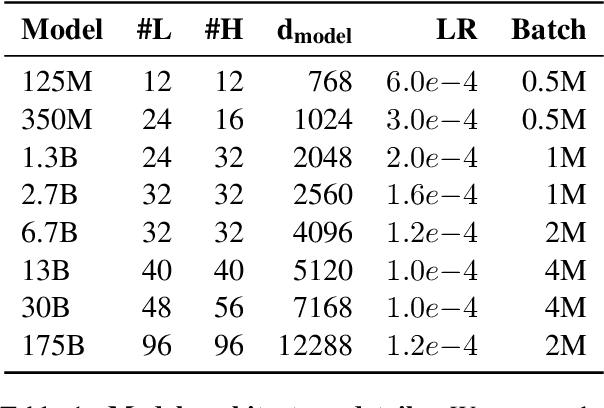
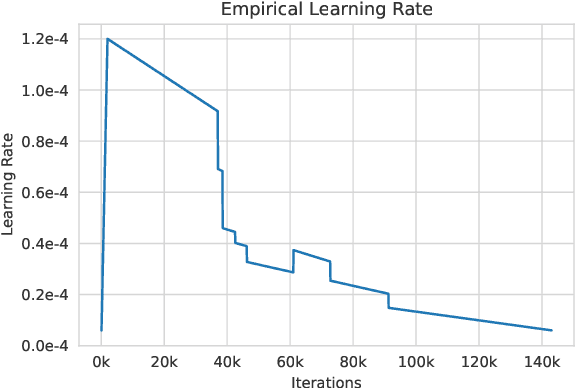
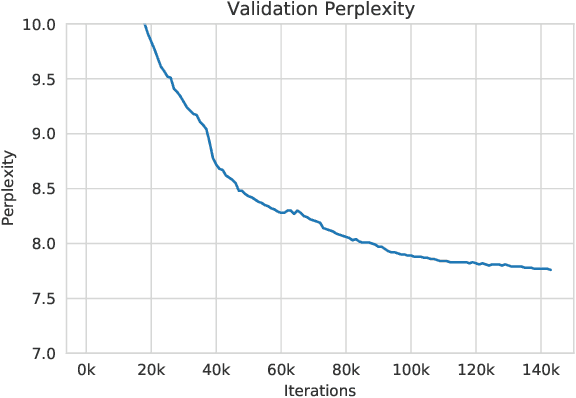

Abstract:Large language models, which are often trained for hundreds of thousands of compute days, have shown remarkable capabilities for zero- and few-shot learning. Given their computational cost, these models are difficult to replicate without significant capital. For the few that are available through APIs, no access is granted to the full model weights, making them difficult to study. We present Open Pre-trained Transformers (OPT), a suite of decoder-only pre-trained transformers ranging from 125M to 175B parameters, which we aim to fully and responsibly share with interested researchers. We show that OPT-175B is comparable to GPT-3, while requiring only 1/7th the carbon footprint to develop. We are also releasing our logbook detailing the infrastructure challenges we faced, along with code for experimenting with all of the released models.
 Add to Chrome
Add to Chrome Add to Firefox
Add to Firefox Add to Edge
Add to Edge